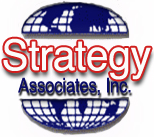Roadmap for High Performance Elements
“In classical thermodynamics, equilibrium is the end state in the evolution of the isolated (closed) systems, the point at which the system has exhausted all of its capacity for work, done its work, and dissipated its productive capacity into useless entropy. Equilibrium is neither the goal nor the fate of living systems, simply because as open-systems they are partners with their environment, with the possibility of importing free energy from the environment and exporting entropy.
They don’t sit quietly by as their energy dissipates. They don’t seek equilibrium. Quite the opposite. To stay viable, open-systems maintain a state of non-equilibrium, keeping the system off-balance so that it can change and grow. They participate in an active exchange with their world, using what is there for their own renewal.”
There are nine elements involved in the Roadmap for High Performance. Each has its own unique contribution to the journey towards excellence and competitive advantage, but together–as a system–they proclaim a single compelling truth: You too can do it, and you can do it yourself.
- But just what can you do yourself? The answer revolves around the following nine outcomes of high performance and excellence:
- You can gain, retain, and delight customers by focusing every part of you quality system on meeting their needs and expectations.
- You can understand the scope and operation of your organization’s quality system, no matter what type of business you are in.
- You can deepen senior management’s commitment to quality and spread it around the organization, thereby creating a unified team working together to achieve common goals.
- You can develop trained, empowered, and enthusiastic workers dedicated to continuous improvement.
- You can plan for quality leadership in five years, in one year, next month, this week.
- You can construct a systematic approach to managing the information you need to insure and improve your competitive performance.
- You can initiate improvements that address the most serious deficiencies, and most promising opportunities, in all of your processes.
- You can become a quality leader by acquiring the confidence of a do-it-yourselfer and the right tools and building blocks for the job.
- You can win, can achieve high performance, and become an excellent organization a three year timeframe, or less.
Confidence comes from knowing what to expect and how to respond. It begins with a basic understanding of the system for high performance. At the beginning, this system can seem mysterious, complex, and foreboding. But like any system, with the aid of this toolkit, it can be understood with a little assistance and a lot of tenacity.
This toolkit is based upon the Baldrige Quality Award, the Sterling Award, and the European Quality Award programs and is designed as a value system, an education and communications tool, a vehicle for cooperation, as well as a device to help evaluate quality standards. In the words of Curt Reimann: “It is adaptable to meet the needs of any organization and is being used throughout the land in four basic areas: assessment, setting up a quality system, communications, and education and training.”
Clearer vision is one of the major benefits of the Roadmap for Excellence. The bits and pieces you may have collected about what it takes to instill quality can be found in the criteria and elements. It is a systematic guide to any organization’s quality system. One quality judge has likened it to a “Dewey Decimal System” for quality. The criteria lay the road map to quality improvement before you, then put you on the right path to reach it. Others have used the terms “framework,” “model,” and “blueprint.”
Companies are hungry for a guide through the maze of quality programs, ideas, and personalities. They are using the Roadmap to assess their quality systems, to measure progress, to evaluate applicants for their own internal quality awards, to measure performance, and to improve quality. There are nine separate but related elements in the Roadmap to Excellence as follows:
- The Pathway to High Performance
- Categories of Business Excellence
- Basic Tools for Improvement
- World-Class Building Blocks
- The Journey to Excellence
- The Keys to Organizational Excellence
- Breakthrough Tools for Results
- Knowledge Management
- Macrologistics Management
What every organization must do is understand the status and overall score of its own quality system. The remaining sections of the manual are intended to serve as a do-it-yourself guide in identifying and improving the elements in your quality system. Each section comes complete with an assessment instrument to evaluate the organizations current practices and situation concerning each of the nine components of the Roadmap.
